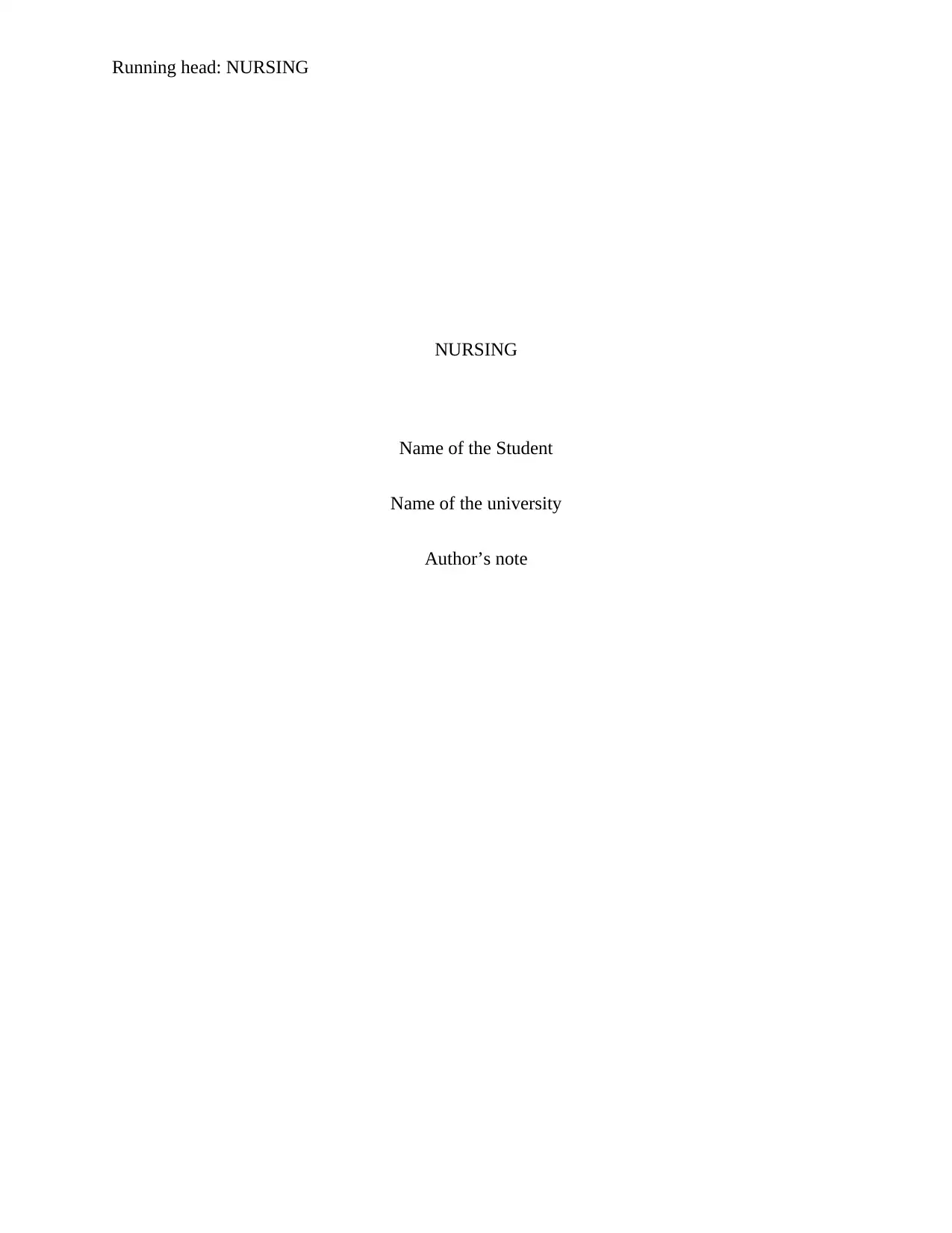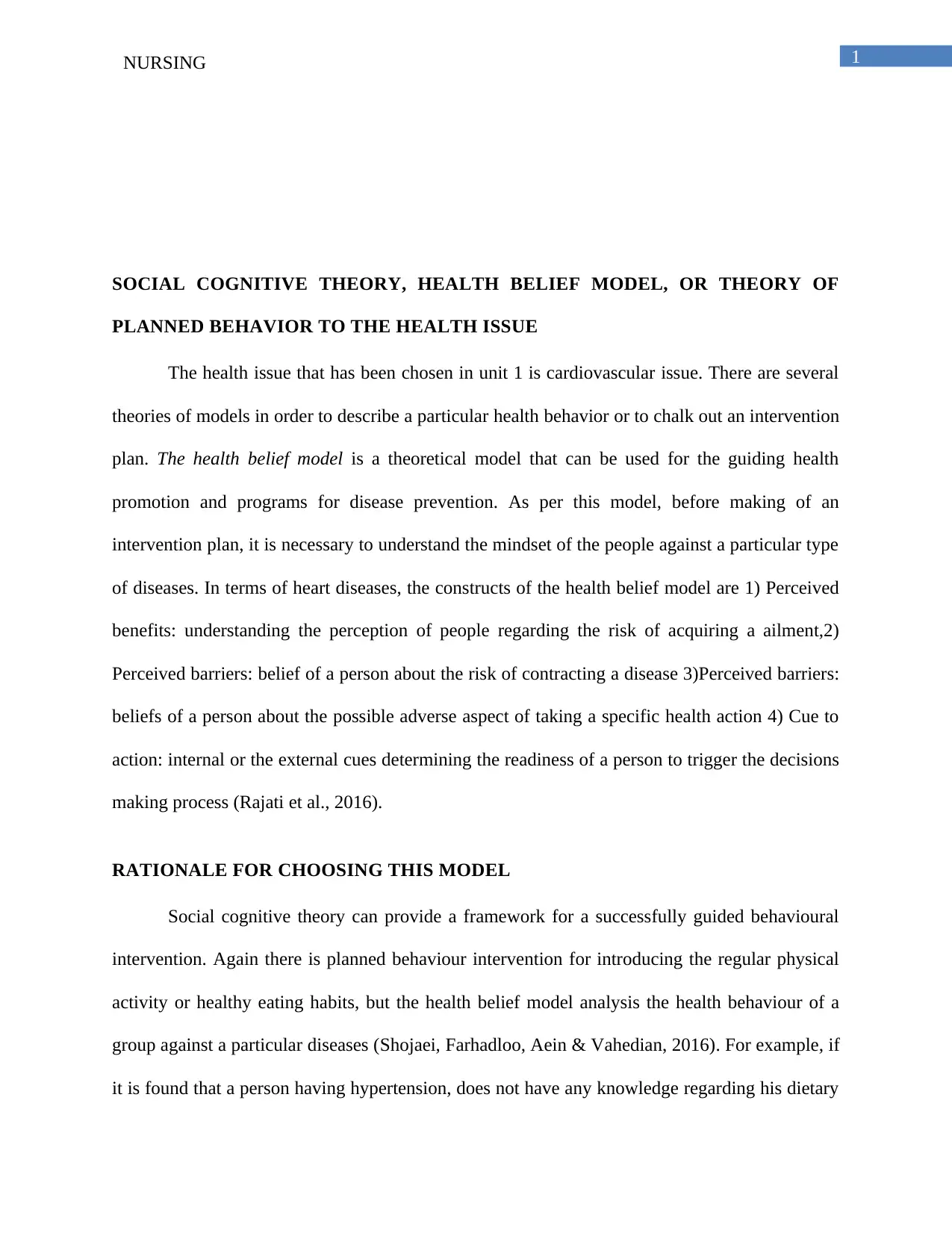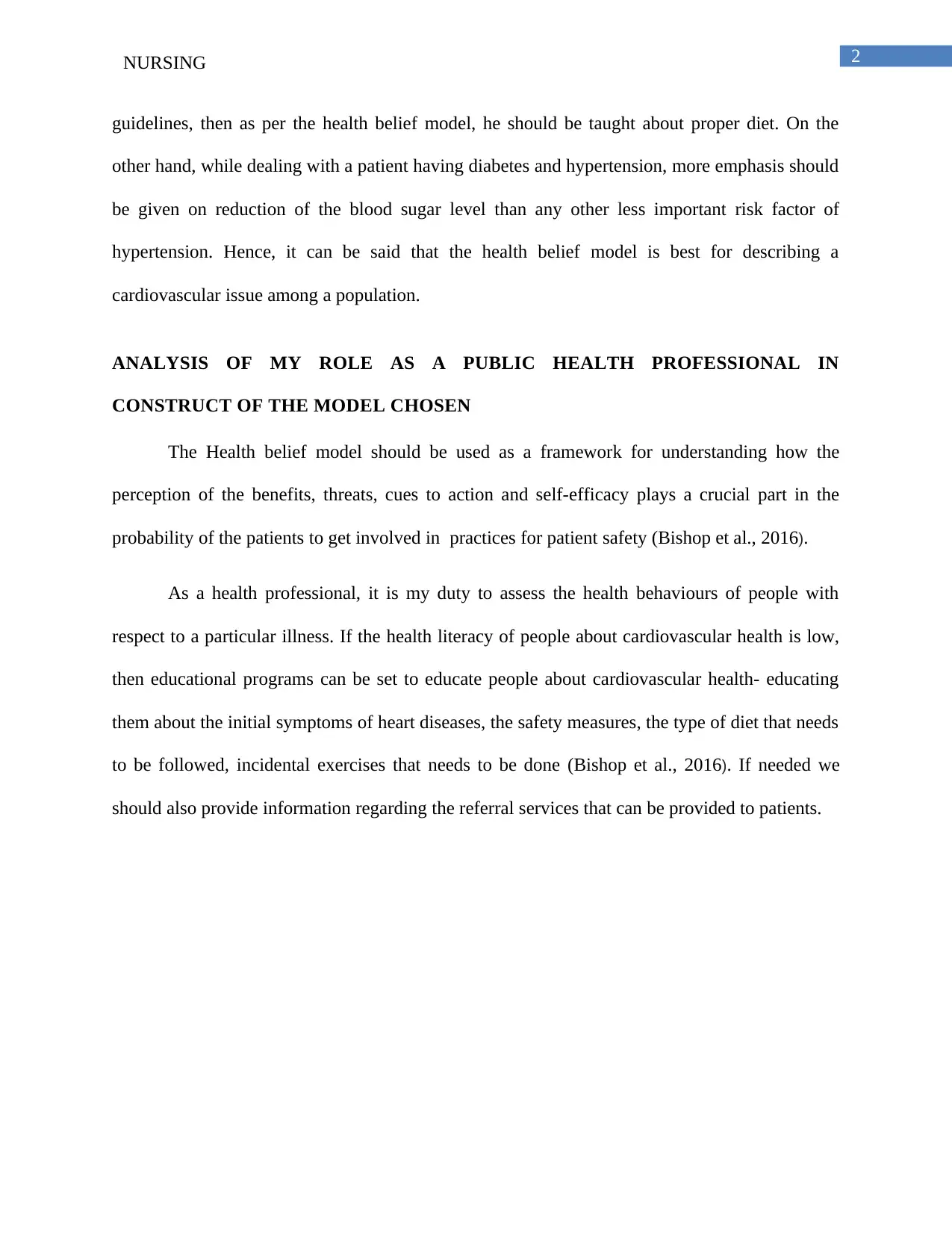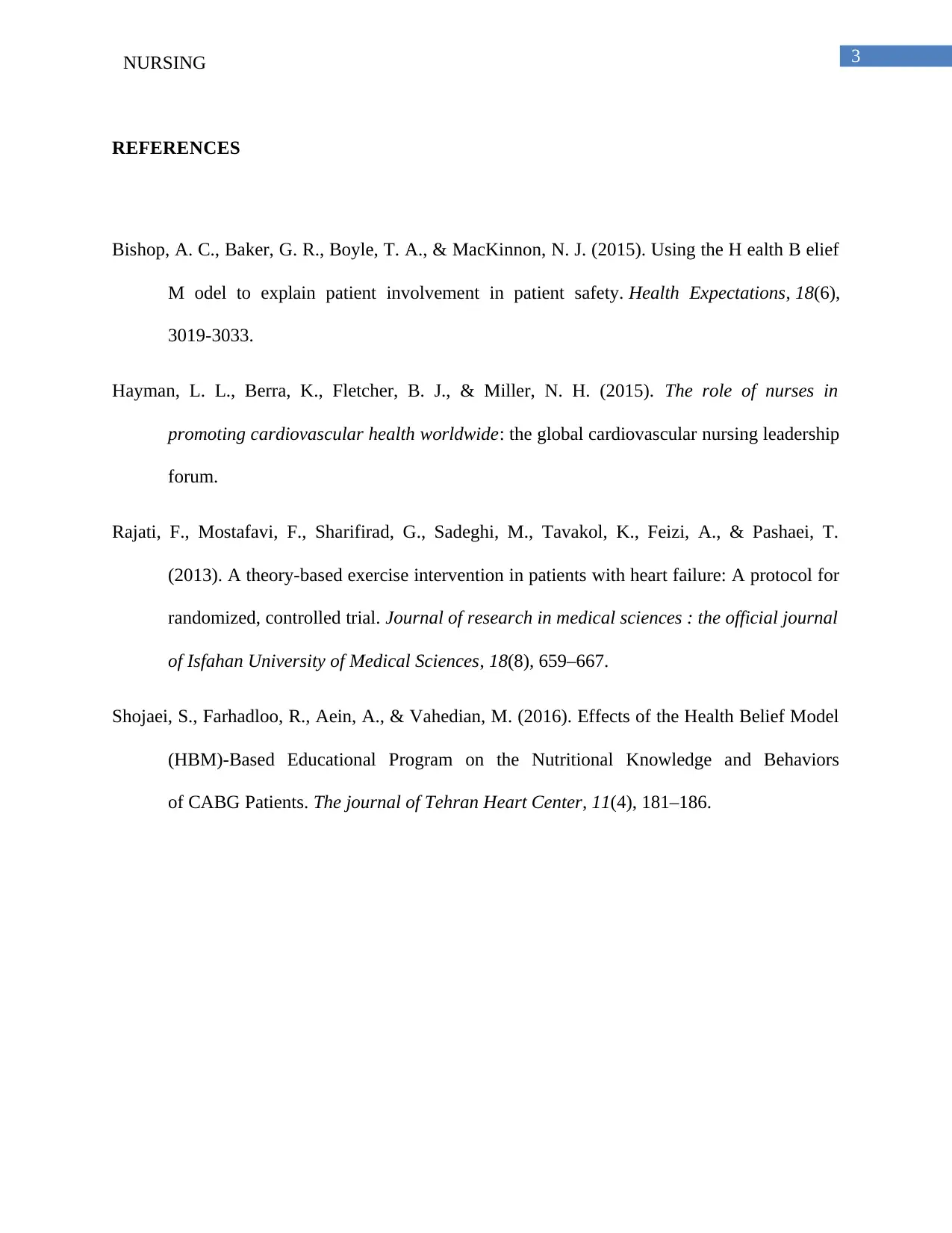Analysis of the Health Belief Model for Cardiovascular Health Issues
VerifiedAdded on 2022/10/02
|4
|778
|22
Homework Assignment
AI Summary
This assignment explores the application of the Health Belief Model (HBM) to cardiovascular health issues. The student analyzes the HBM's constructs, including perceived benefits, barriers, and cues to action, to understand health behaviors related to heart disease. The assignment provides a rationale for choosing the HBM, highlighting its effectiveness in guiding behavioral interventions and patient education, particularly in areas like dietary guidelines and risk factor management. The student also discusses their role as a public health professional, emphasizing the importance of assessing health literacy, designing educational programs, and providing referral services to improve patient outcomes. The references provided support the use of the HBM in promoting cardiovascular health and patient safety.
1 out of 4











![[object Object]](/_next/static/media/star-bottom.7253800d.svg)